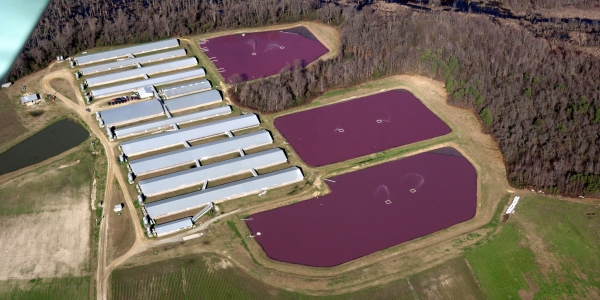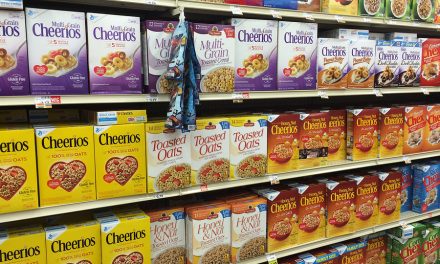Photo credit: Rick Dove, Waterkeeper Alliance
Where does your meat come from? Filmmaker Christopher Quinn and Academy Award-winning actress Natalie Portman set out to answer that question in their new feature-length documentary, “Eating Animals,” an adaptation of Jonathan Safran Foer’s critically acclaimed book of the same name.
RELATED STORY:
- New Zealand is aerial spraying pristine land and then having animals eat off it, experts are worried
Portman narrates the film, which promotes the transition from industrial factory farming to more humane, and more environmentally sustainable and regenerative farming methods.
From the “Eating Animals” website:
“Eating Animals” is an urgent, eye-opening look at the environmental, economic and public health consequences of factory farming. Tracing the history of food production in the United States, the film charts how farming has gone from local and sustainable to a corporate Frankenstein monster that offers cheap eggs, meat and dairy at a steep cost: the exploitation of animals; the risky use of antibiotics and hormones; and the pollution of our air, soil and water.
“Eating Animals” doesn’t sugarcoat the horrors of factory farming. And though it touches on veganism and plant-based food trends, it doesn’t promote either as the exclusive alternative to corporate factory farms. What the film does, Portman told Stephen Colbert during a promotional visit to “The Late Show,” is focus on the “good farmers who are doing it right,” and the challenges they face trying to work within the existing industrial ag system.
Frank Reese and Craig Watts are two of those “good” farmers. Both are featured in the film, and both come from very different backgrounds.
Reese is a heritage poultry farmer who has committed his life to protecting the oldest continuously bred flock of heritage turkeys in America. He runs The Good Shepherd Poultry Ranch, a 160-acre farmstead in Lindsborg, Kansas, and The Good Shepherd Institute, an educational hub for breeding poultry, and training farmers, chefs and students in agricultural practices that link animal health to the health of everything else—the health of the planet, farmer, consumer and economy.
RELATED STORY:
Watts has a different story. He spent 22 years as a contract farmer for one of the biggest chicken companies in the country, Perdue Farms. After reaching his breaking point, he did something no one had done before. He invited an animal welfare organization, Compassion in World Farming, to his property to show them the shocking conditions on a standard chicken farm. That simple action pushed Perdue to become the first major chicken company to publish a detailed animal welfare policy.
The film also features Dr. Jim Keen, a veterinarian and infectious disease ecologist-epidemiologist who for decades was a supporter of Big Ag. In 2007, Keen had an epiphany. He’s now one of the biggest supporters of livestock protection. He’s also well-known as the whistleblower who exposed the abuse of research livestock at the U.S. Department of Agriculture’s Meat Animal Research Center in Clay Center, Nebraska.
Rick Dove, one of the founding members of Waterkeeper Alliance, is responsible for bringing public attention to the serious pollution problems related to factory farming. The film explains his role in documenting swine waste being discharged into local waterways in North Carolina. Larry Baldwin, also with Waterkeeper Alliance, is mentioned in the film for his work bringing environmental justice to communities—mostly poor and rural—that bear the brunt of the water and air pollution generated by factory farms.
What will it take to end factory farming? Collaboration among producers, buyers, processors, marketers, and others is essential for building the alternative industry infrastructure required to support and sustain change at a systems level. And public policy can and should play a role.
But as Portman told Colbert, consumers must do their part to drive the transition toward healthier food production. How? By making conscious, ethical purchasing choices. And by making it clear to producers that they will purchase meat and dairy only from those farmers “who are doing it right.”
If you’re interested in being part of the solution, there are many ways to get involved:
1. Learn more about regenerative agriculture and become a part of the movement.
2. Shop at your local natural health food store or co-op. These businesses make sure they sell only the highest-quality organic and regenerative foods.
3. When eating meat, make sure it’s 100% grass-fed beef or certified organic.
4. Check out the “Eating Animal’s” resources page, which provides information on animal welfare, antibiotic resistance, sustainable food and farming, the future of food and more.
5. Watch “Eating Animals” at a theater near you.
*Article originally appeared at Organic Consumers.












